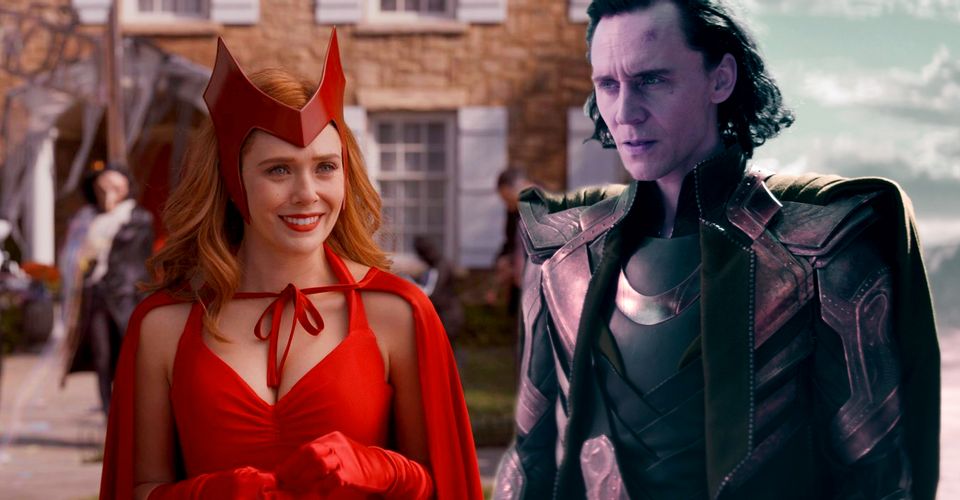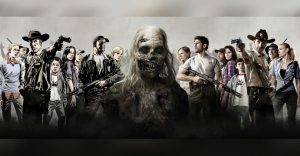Disney+ Marvel Shows Will Face An MCU Phase 2 Problem In 2022 – But Worse

Despite making a strong start with its transition to the small screen, 2022 looks certain to put Marvel’s Disney+ plan for the MCU to the test. Similar to concerns over Marvel’s approach in Phase 2 of the MCU, with rapid expansion into new franchises, characters, and corners of the universe after The Avengers, things are changing massively once again. Only a year after the premiere of WandaVision, the first-ever Marvel Studios-produced show, four other MCU series can be found on the streaming platform. While Marvel already had a presence in television with successful titles such as ABC’s Agents of Shield or Netflix’s Daredevil, it was not until WandaVision that the creative team behind the MCU developed a series for the franchise. Instead of the one-way only references to the movies and the continual questions around shows like Daredevil and Agents ofShield‘s place in the canon, WandaVision and the following Disney+ Marvel shows were part of the bigger MCU from the start. However, while this increasingly interconnected web may seem like a good thing, it also raises challenges for Marvel’s ongoing MCU shows strategy in 2022.
When Disney’s streaming service was announced, it was very much expected that the MCU would take full advantage of the opportunity. The exclusive presence of Marvel Studios on a streaming platform looked from the start as something that would be good both for Marvel and Disney. In today’s ever-going battle for content between all the streaming services, the MCU would offer Disney+ a catalog of original, exclusive titles associated with cinema’s strongest brand over the last decade. From the MCU’s point of view, Disney+ would offer a place to explore multiple characters and storylines that would not have the same space in the movies, as well as a way to experiment with different formats and genres. As expected, MCU titles such as WandaVision and The Falcon and the Winter Soldier have been, alongside Lucasfilm’s The Mandalorian, the flagships of Disney+.
Despite what may have been expected before the shows came to be, none of the Marvel Disney+ series felt like a filler or a disposable entry in the franchise. Each series has featured some of the most famous Marvel characters and has been having major consequences in the overall MCU Phase 4 storyline. From the birth of new characters to the change in powers and personality of well-known heroes, Marvel’s Disney+ series have been as essential to watch as the theatrical releases. However, while the MCU’s dedicated audiences have reveled in the content, the question of how those shows will impact the general audience’s perception of future movies is still a mystery. While interconnectivity is not something new to the MCU, the main storyline now branching off to multiple shows on a separate streaming platform may make it harder for casual viewers to keep up with their favorite Avengers. Accordingly, the 2022 releases will test if Marvel’s Disney+ plan has actually worked.
Some MCU Characters Changed Tremendously In Their Disney+ Shows

While previously, viewers would only have to keep track of cinematic storylines, the introduction of the Disney+ shows makes it even more difficult for all but the most dedicated fans to remain up to date. For instance, to a member of the audience who will only watch the MCU theatrical releases, Wanda was last seen as a mourning hero whose powers could be entirely explained by the Mind Stone. For those who watched WandaVision, however, Wanda is now Scarlet Witch, a nexus-being finally aware of her magical powers in possession of the Darkhold. There is also an all-new Vision, White Vision, who is now out in the world. As if all the extra information to catch up was not enough, Wanda is now a mother of two kids, both of which were created by magic and are now lost somewhere in the Multiverse. The character has also made huge mistakes by taking an entire town hostage and could be on its way to becoming an anti-hero or even a villain thanks to the influence of the Darkhold. But the Scarlet Witch was not the only one to go through an extensive character arc.
Sam Wilson, who at the end of Endgame received Captain America’s shield straight from the hands of Steven Rogers, went from struggling to accept the mantle of America’s most famous hero to becoming Captain America. The Falcon and the Winter Soldier offered a better look not only on Sam and Bucky but also on the true legacy of Captain America. Additionally, after dying at the beginning of Infinity War and having a possible future teased with Endgame’s time travel shenanigans, the MCU now has almost a completely new Loki (plus their variants). The reformed Loki who lived through the events of Thor: TheDark World, Thor:Ragnarok, and died saving Thor does not exist anymore. Instead, the Loki featured in the Disney+ series is a post-Battle of New York version of the character who is having to deal with much bigger problems than just Midgard or Asgard. While much of Loki’s recent character progression has been lost, the villain is going through an alternative route of self-discovery that includes getting to know different Lokis from every corner of the Multiverse.
These are just some of the examples of how much the characters presented in the Disney+ series have changed when compared to their last appearance on the big screen. With the advantage of serialized storytelling and hours to focus on each character, these heroes and villains received years worth of development in just a single season of television. This presents a problem for anyone who has previously been a dedicated follower of the saga in the cinema.
Disney+ Shows Set Up Major MCU Phase 4 Storylines & Villains

On top of characters going through major changes, the Marvel Disney+ shows are also setting up major storylines and antagonists for the next phases of the MCU. Kang the Conqueror, who may be the franchise’s next Thanos, is the best example. Instead of appearing in the post-credits scene of an Avengers film, one of Marvel’s most important villains was introduced in the final episode of Loki. Despite being a version of Kang, He Who Remains already set up the villain’s entire background and motivations during his conversation with Loki and Sylvie. In addition, Sylvie choosing to kill He Who Remains also opened the Multiverse to complete chaos and set the stage for Kang the Conqueror to appear in his full form.
Another major storyline being laid out in the Disney+ series is whatever plan Julia Louis-Dreyfus’s character Contessa Valentina is trying to achieve. The character initially featured in The Falcon and Winter Soldier is seemly trying to put together a group of anti-heroes that will most likely be present in future shows and films. Should she appear subsequently in future MCU movies with a fully-formed plan, audiences could be understandably mystified as to who she is and what her intentions are if her character’s development remains restricted to Disney+. This highlights how, by introducing potentially major franchise villains on the small screen, the MCU may be setting itself up to fail.
The MCU Risks Losing Casual Audiences

With so many storylines branched across multiple formats, it has never been more difficult to follow the MCU in its entirety. While the dedicated Marvel audience most likely appreciates their favorite characters and comic book arcs getting a chance to shine in multiple titles, casual audiences may not have the same experience. Each MCU film has always been connected to a broader universe, but the situation is now different as not only has the number of released films grown, but so too has the quantity of Disney+ shows being released. To fully appreciate every Phase 4 MCU event, one would not only have to sign for a streaming service but also keep up with every Marvel release on the platform (and there are more than a few).
After a decade of building Hollywood’s most loyal audience and reaching many milestones at the box office, the MCU cannot make the mistake of taking the interest of casual viewers for granted. Even if those continue to show up at every Marvel movie opening weekend, a possible feeling of being left behind can, in the long run, fade their interest in the franchise. As a consequence, the MCU could become an increasingly niche project, appealing only to the most committed.
2022 Is The Make Or Break Year For Marvel’s Disney+ Plan

The answer to the question of how audiences will receive Marvel’s Disney+ series strategy begins in 2022. More specifically, the release of Doctor Strange in the Multiverse of Madness and the potential success of the marketing campaign for Ant-Man and the Wasp: Quantumania will be the first major indicators of how casual viewers are going to perceive cinematic stories that are connected to shows of a streaming platform. For Multiverse of Madness, Wanda’s role plus the already confirmed appearance of Strange Supreme make it essentially mandatory for the viewers to be aware of the events of WandaVision and What If…?. As for Quantumania, the confirmed presence of Jonatan Majors as part of the cast places a question of whether or not the movie’s marketing will care to repeat at least some of Kang’s introduction from Loki.
Both the box-office results as well as the overall reception of MCU’s films in 2022 and beyond will prove if Marvel’s ambitious plan for the franchise on Disney+ was worth it. If Multiverse of Madness and Quantumania manage to integrate so many external elements while still delivering a cohesive story that does not leave anyone behind, then the MCU can rest easy. If not, then the multiple storylines across multiple platforms strategy may have to be rethought.
- Doctor Strange in the Multiverse of Madness (2022)Release date: May 06, 2022
- Black Panther: Wakanda Forever/Black Panther 2 (2022)Release date: Nov 11, 2022
- The Marvels/Captain Marvel 2 (2023)Release date: Feb 17, 2023
- Thor: Love and Thunder (2022)Release date: Jul 08, 2022
- Ant-Man and the Wasp: Quantumania (2023)Release date: Jul 28, 2023
- Guardians of the Galaxy Vol. 3 (2023)Release date: May 05, 2023
About The Author


















